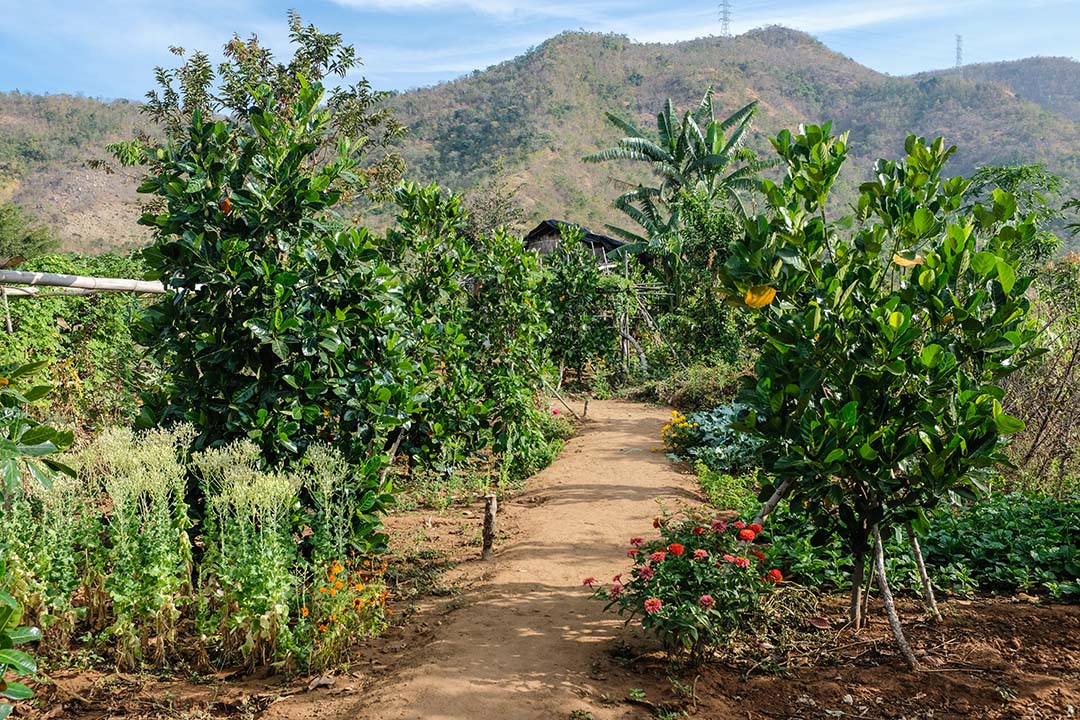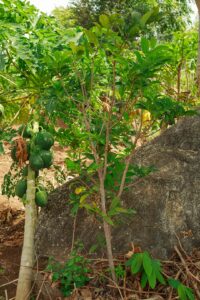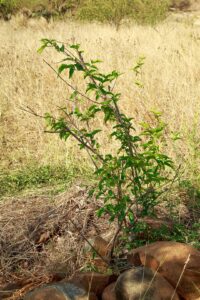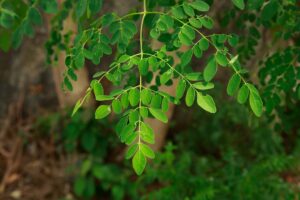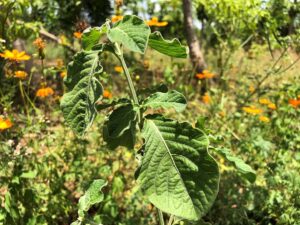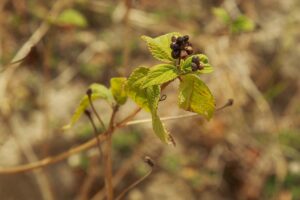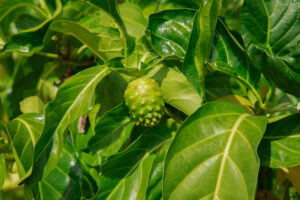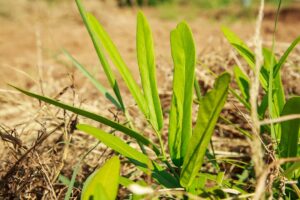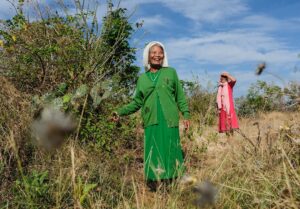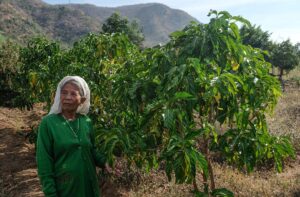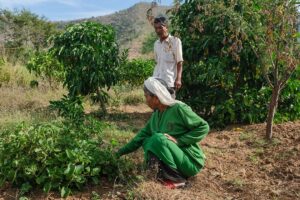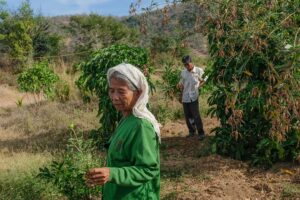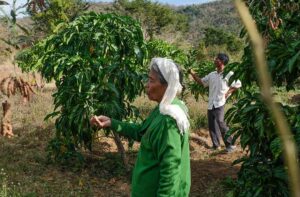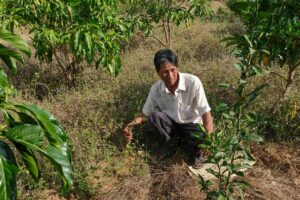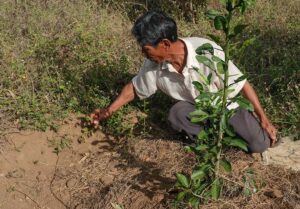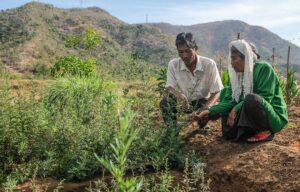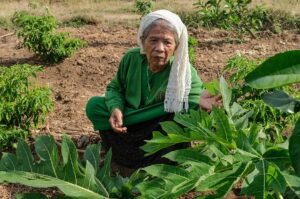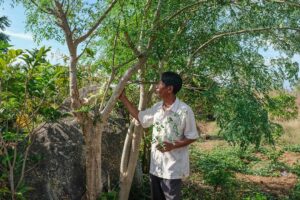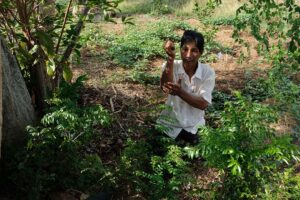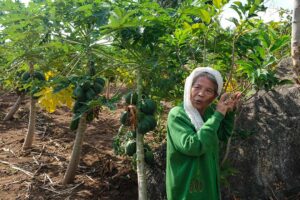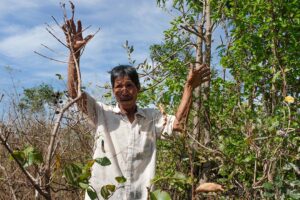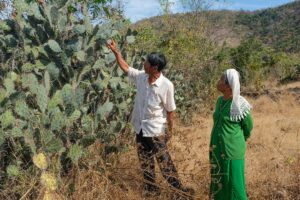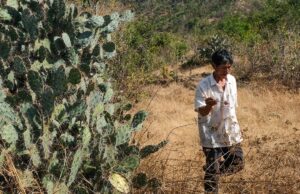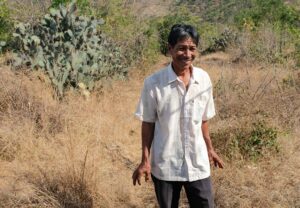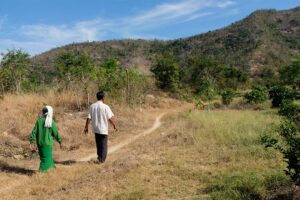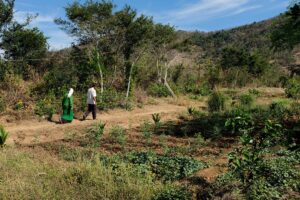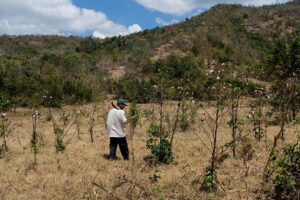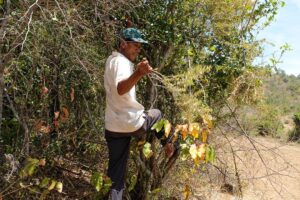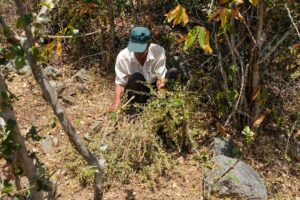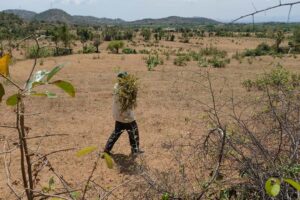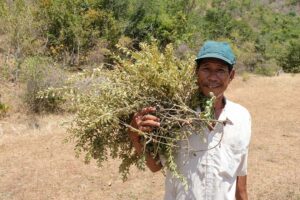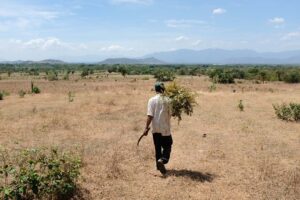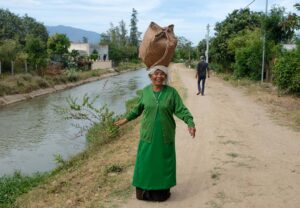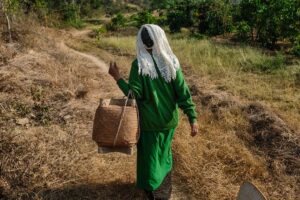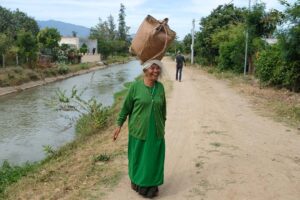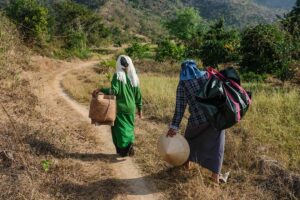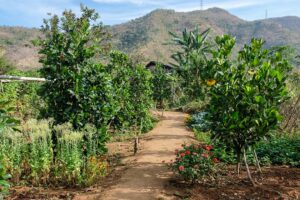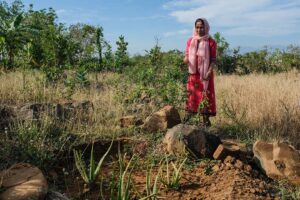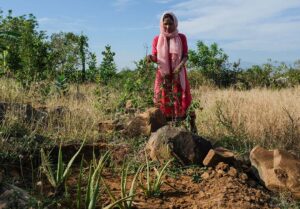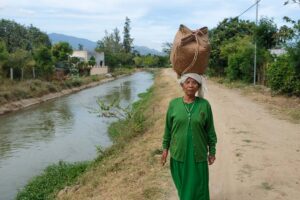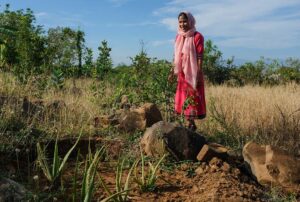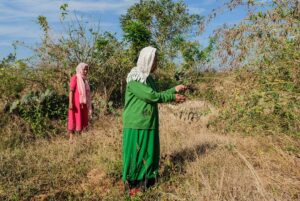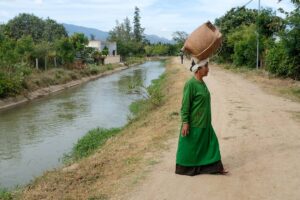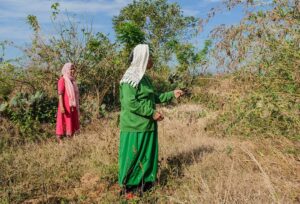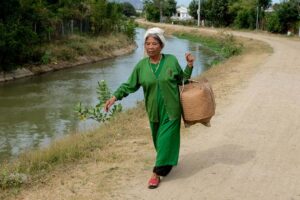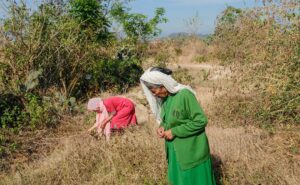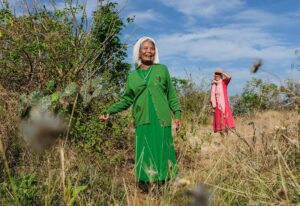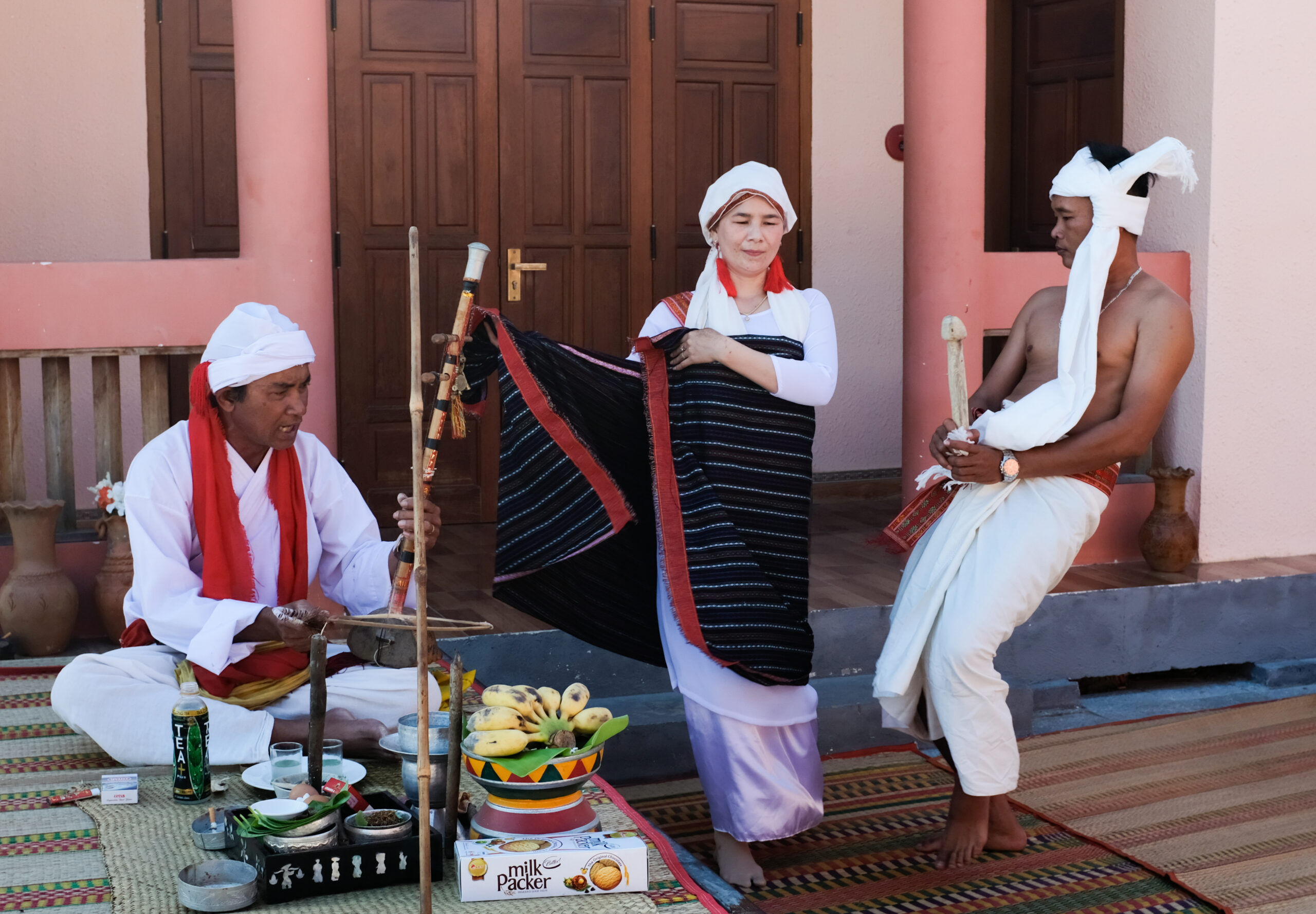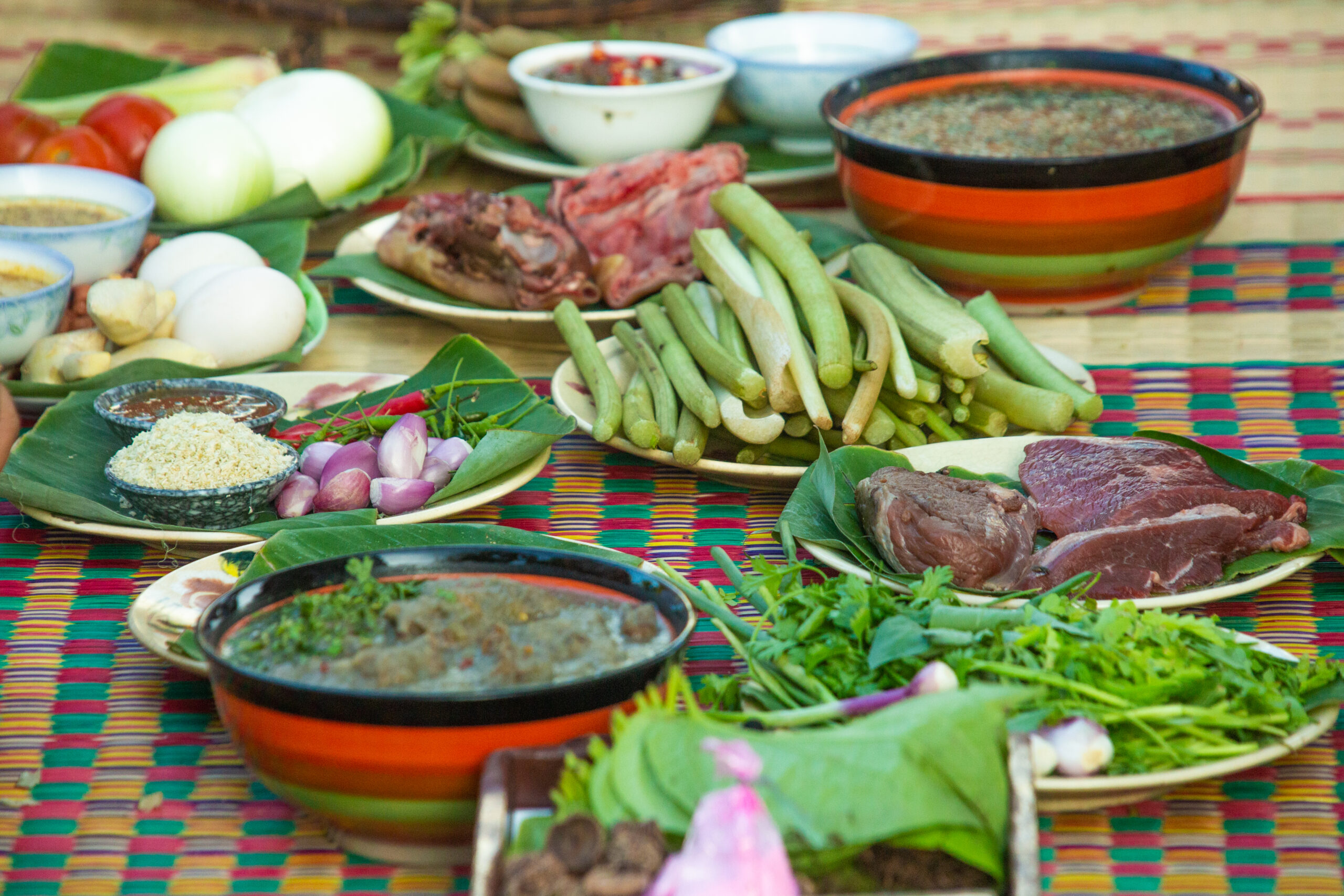The connection to a piece of land can be expressed in the understanding that people have with its products. In Ninh Thuan, the Cham people know the land Hamu Crauk The clay layer beneath the surface regenerates every year or two. They know how to find underground streams of water under the white sand dunes. They know that in the forest, mistletoe species will have different medicinal properties when living in symbiosis with different trees. This knowledge is not proven through research but is built through careful observation, passed down from generation to generation.
Thanks to that connection, Cham herbal medicine village Pabblap was born. The administrative name is Phuoc Nhon village, Pabblap has a tradition of collecting medicinal plants, processing and dispensing Cham herbal medicines with more than eighty percent of the villagers relying on this livelihood. Cham herbal medicines are plants that grow naturally around the village and wild in the forest, identified and systematized by many generations of Cham people using traditional knowledge to process into medicines. Currently, in the village, there are hundreds of members of the Oriental Medicine Association who have a license to practice through training courses on processing medicinal herbs from nature.
But right in the village Pabblap, growing medicinal plants is still an exception. In about 1.8 hectares of land right at the foot of Phuoc Trung mountain is a medicinal plant garden like that of Mr. Kieu Tim, where he is preserving and collecting about thirty varieties of plants with high medicinal properties used in Cham medicine.
Uncle Kieu Tim shared:
“I chose this land because it only takes about 15 minutes to get to the forest. Medicinal plants grow in the forest. It has to be forest land for it to grow properly. Two years ago, when I came here, the land at the foot of the mountain had nothing but rocks. Everyone looked at it and said it couldn’t grow anything, so they left. Just look at the cows grazing over there and you’ll know. There is a forest, but the forest is stunted. Now everyone is surprised when they come to the fields. In three years, this place will become a forest garden, all green and cool, without any sunlight.”
Uncle Tim knew how to find medicine, how to make medicine, how to dispense medicine. He went to sell medicine with his grandparents when he was six or seven years old. Walking in the fields, he looked at the plants as if looking at a treasure trove: this plant cures headaches, this plant is good for bones and joints, this plant has seeds but the roots are poisonous, this plant can only be fully utilized when soaked in alcohol. But to become a medicine grower, Uncle Kieu Tim had to think differently.
“I’m taking short-term profits to support long-term profits. The fields are green now, but there are many vegetables and fruits. As for the chemicals, we have to wait. We find plants, plant them, and wait to see if they are suitable for the soil, but we cannot use any chemicals on them. If the plants are easy to grow, we can rest assured. We can leave them alone and they will survive. As for the plants that are brought in from the forest, I’m also nervous and don’t dare go anywhere. I wait until they take root before I dare to breathe. It takes three or four times to finish. I want to grow this garden, and if anyone in the village needs to plant, I will give it to them.”
This collection of documents introduces some of the plants currently being cultivated at Uncle Kieu Tim's medicinal plant farm, which are commonly used in Cham medicine. According to Uncle Kiem Tim, making medicine is when we look at the plants, we know how they will help people. Growing medicine is when we look at the plants, we ask how they will live. The medicinal plants that used to grow wild are now taking root in another place, because someone has decided to think about their future, for the people who will need them later.
Stories and knowledge about Cham herbal medicine Pabblap was introduced by Uncle Kieu Tim, Phuoc Nhon village, Xuan Hai commune, Ninh Hai district, Ninh Thuan province. He learned a lot about medicinal plants and how to make medicine and dispense medicine from his grandparents and parents. His mother, Thanh Thi Su, is also a long-time herbal medicine artisan. His daughter, Kieu Maily, is learning from him about medicinal plants and the herbal medicine profession, and is also recording this knowledge and writing poems about the traditional medicine profession of the Cham people.
All information posted in the Connecting Heritage Digital Collection is contributed by the community and is for reference only. The Program is not responsible for any differences from the information stated in the Digital Collection and disclaims any liability arising from the use of information from this Collection. For more information, please visit Community Rules.

